Stepping into Fes is like walking through a portal into medieval Morocco, where the scent of cedar wood mingles with exotic spices and the sound of craftsmen hammers echoes through narrow alleyways that have remained unchanged for over a millennium. As one of the world best-preserved medieval cities and Morocco spiritual and cultural heart, Fes offers an intoxicating blend of ancient traditions, architectural marvels, and authentic experiences that you simply cannot find anywhere else.
This comprehensive guide to the best activities Fes has to offer isn’t just another tourist checklist – it’s your insider passport to experiencing this imperial city like a local. Whether you’re drawn by the world oldest university, mesmerized by the kaleidoscope of colors in the tanneries, or eager to lose yourself in the labyrinthine medina, we’ve curated the most essential things to do in Fes to help you create memories that will last a lifetime.
Fes at a Glance: What You MUST Know Before You Go
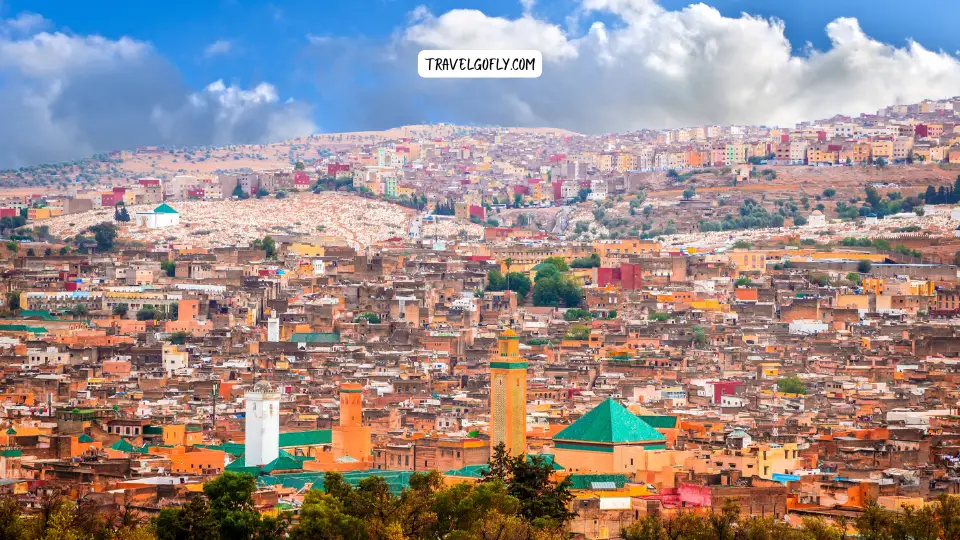 Before diving into the treasures that await you, let’s address the burning questions every traveler has about Fes:
Before diving into the treasures that await you, let’s address the burning questions every traveler has about Fes:
What is Fes best known for? The UNESCO World Heritage Fes el-Bali medina is the world largest car-free urban zone and home to the iconic Chouara Tanneries, the Al-Karaouine University (founded in 859 AD), and some of Morocco most exquisite Islamic architecture. The city is also renowned for its master craftsmen who have been perfecting their trades for generations.
Best time to visit Fes? The sweet spot is March to May and September to November when temperatures hover around 20-25°C (68-77°F) and the medina comes alive without the sweltering summer heat. Avoid July and August unless you’re comfortable with temperatures soaring above 40°C (104°F).
How many days do you need in Fes? A minimum of 2-3 days allows you to explore the major Fes attractions without rushing, while 4-5 days lets you delve deeper into the culture and take day trips to nearby destinations like Meknes or the Middle Atlas Mountains.
Is Fes safe for tourists? Yes, Fes is generally safe for visitors who exercise normal travel precautions. The biggest challenges are navigating the maze-like medina and dealing with persistent vendors – both easily managed with the right strategies we’ll share throughout this guide.
Currency in Fes? The Moroccan Dirham (MAD) is the local currency. ATMs are widely available in the Ville Nouvelle, though scarcer in the old medina. Many establishments accept euros, but you’ll get better rates paying in dirhams.
Getting to Fes? Fes-Saïss Airport connects to major European cities, while the train station links Fes to Casablanca, Rabat, and Tangier. Buses serve destinations throughout Morocco and neighboring countries.
Getting around Fes? The medina is best explored on foot – cars can’t access most areas anyway. For longer distances, petit taxis are affordable and convenient, while grand taxis serve routes to nearby towns.
Top 15 Things to Do in Fes el-Bali (Old Medina Guide)
The beating heart of Fes lies within the ancient walls of Fes el-Bali, where every corner tells a story and every doorway hides a secret. Here are the fifteen experiences that define any visit to this magnificent medina.
1. Chouara Tanneries: Morocco Living Medieval Workshop
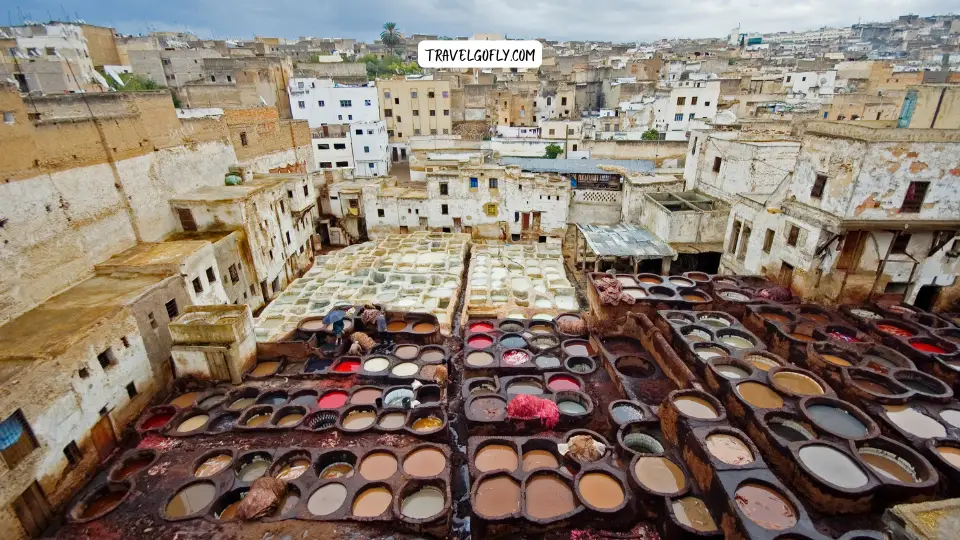 The moment you catch your first glimpse of the Chouara Tanneries from a rooftop terrace, you’ll understand why this sight has captivated travelers for centuries. Below stretches a honeycomb of stone vessels filled with dyes in every imaginable shade – brilliant yellows from saffron, deep reds from cherries, and rich browns from henna. Watch leather workers, their arms stained rainbow hues, treat hides using techniques unchanged since medieval times.
The moment you catch your first glimpse of the Chouara Tanneries from a rooftop terrace, you’ll understand why this sight has captivated travelers for centuries. Below stretches a honeycomb of stone vessels filled with dyes in every imaginable shade – brilliant yellows from saffron, deep reds from cherries, and rich browns from henna. Watch leather workers, their arms stained rainbow hues, treat hides using techniques unchanged since medieval times.
The process is mesmerizing: raw animal skins are first soaked in lime water to remove hair and fat, then transferred to pigeon droppings (a natural softening agent) before being dyed in the colorful vats. The smell is admittedly intense – mint leaves offered by shopkeepers aren’t just courtesy; they’re a necessity.
Location: Heart of the medina, accessible through leather shops near the Sidi Moussa Mosque
Opening Hours: Daily 8:00 AM – 6:00 PM
Entrance Fee: Free, but terrace access typically requires a small purchase (MAD 20-50)
Best Time to Visit: Early morning for best lighting and fewer crowds
Time Needed: 45 minutes – 1 hour
Insider Tip: Don’t negotiate to buy anything until after you’ve seen the tannery – shopkeepers may try to increase prices knowing you’ve already used their terrace
Accessibility Note: Requires climbing narrow stairs; not wheelchair accessible
2. Al-Attarine Madrasa: A Masterpiece of Islamic Architecture
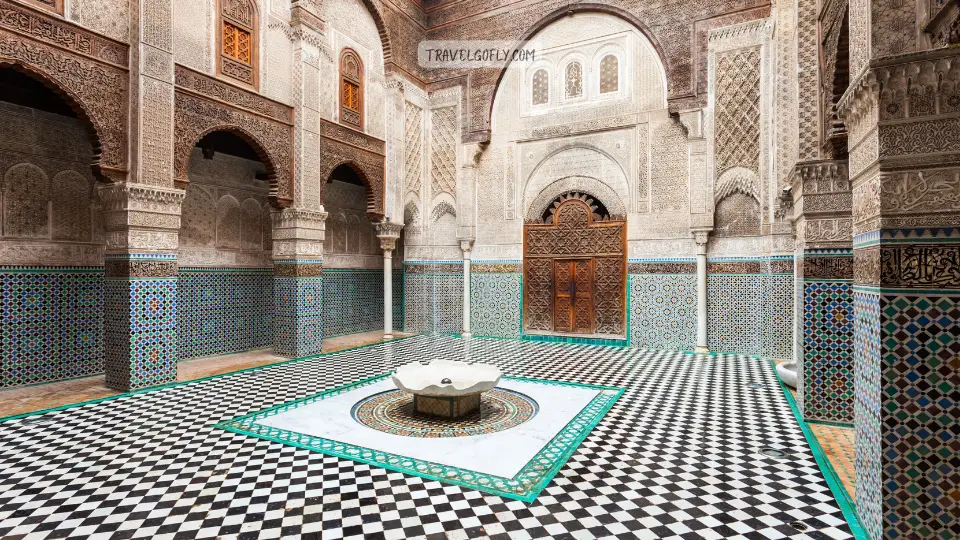 Step through the modest entrance of Al-Attarine Madrasa and prepare to have your breath taken away. Built in 1323-1325 by the Marinid sultan Abu Said Othman, this former Islamic school showcases the pinnacle of Moroccan craftsmanship. Every surface tells a story through intricate geometric patterns, flowing Arabic calligraphy, and delicate stucco work that seems to defy gravity.
Step through the modest entrance of Al-Attarine Madrasa and prepare to have your breath taken away. Built in 1323-1325 by the Marinid sultan Abu Said Othman, this former Islamic school showcases the pinnacle of Moroccan craftsmanship. Every surface tells a story through intricate geometric patterns, flowing Arabic calligraphy, and delicate stucco work that seems to defy gravity.
The central courtyard, with its reflecting pool and marble columns, creates a sense of serenity that contrasts beautifully with the medina bustling energy outside. Look up at the carved cedar ceiling – each piece was fitted without nails, a testament to the mathematical precision of medieval artisans.
Location: Near the Kairaouine Mosque, Fes el-Bali
Opening Hours: Daily 8:00 AM – 6:00 PM
Entrance Fee: MAD 20 (approximately $2 USD)
Best Time to Visit: Late afternoon when sunlight illuminates the courtyard
Time Needed: 30-45 minutes
Insider Tip: Visit during midday prayer when it’s quieter, and don’t miss the student cells on the upper level
Accessibility Note: Several stairs and uneven surfaces
3. Al-Kairaouine Mosque and University: The World Oldest Continually Operating University
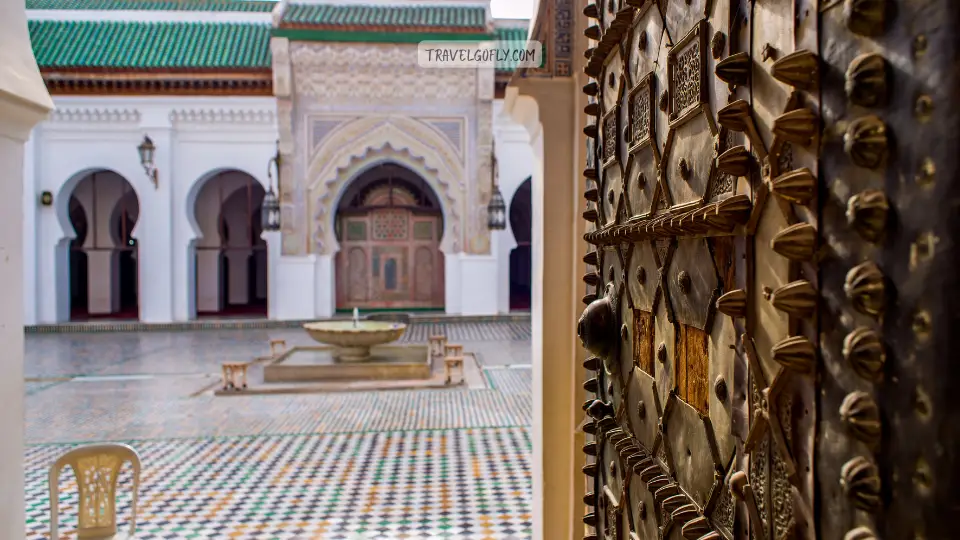 While non-Muslims cannot enter the mosque itself, the exterior views and surrounding area offer glimpses into one of Islam most significant institutions. Founded in 859 AD by Fatima al-Fihri, the University of Al-Kairaouine predates Oxford and Cambridge by centuries. From the ornate gates and minarets visible from the streets, you can appreciate the architectural grandeur that houses this living piece of history.
While non-Muslims cannot enter the mosque itself, the exterior views and surrounding area offer glimpses into one of Islam most significant institutions. Founded in 859 AD by Fatima al-Fihri, the University of Al-Kairaouine predates Oxford and Cambridge by centuries. From the ornate gates and minarets visible from the streets, you can appreciate the architectural grandeur that houses this living piece of history.
The best viewpoints include the nearby terraces in the Attarine souk and the street leading to Bab al-Ghoul. The university continues to be a center of Islamic learning, and you might see students in traditional dress hurrying to lectures just as their predecessors have for over a millennium.
Location: Central Fes el-Bali, near Place Seffarine
Opening Hours: Views available 24/7; guided tours for context recommended
Entrance Fee: Free to view exterior
Best Time to Visit: Morning or late afternoon for best lighting
Time Needed: 20-30 minutes for exterior appreciation
Insider Tip: Join a knowledgeable guide to learn about the university influence on European medieval thought
Accessibility Note: Surrounding streets are narrow with uneven paving
4. Nejjarine Museum of Wood Arts & Crafts: Celebrating Morocco Woodworking Heritage
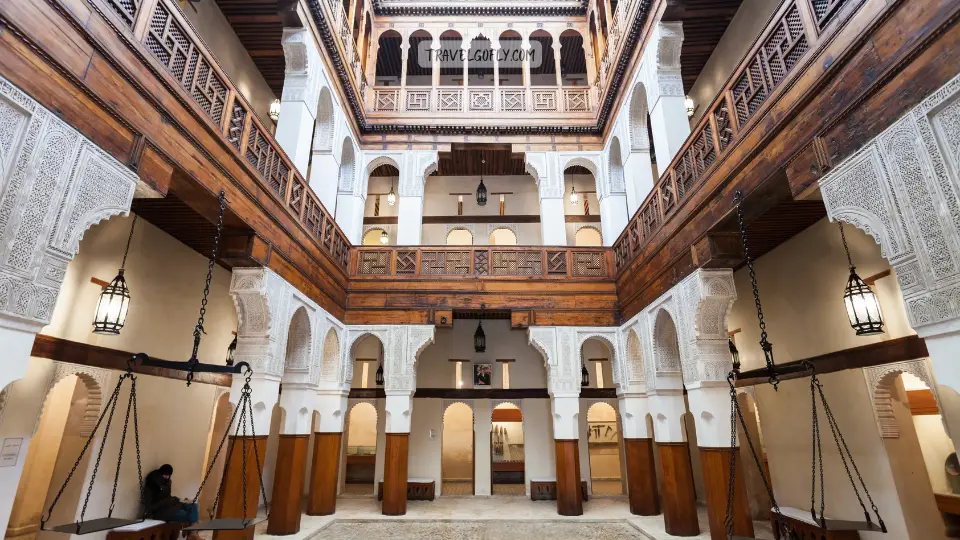 Housed in a beautifully restored 18th-century foundouk (merchant inn), the Nejjarine Museum showcases the finest examples of Moroccan woodworking traditions. The building itself is a work of art – the elaborately carved facade and peaceful central courtyard provide the perfect setting for displays of antique furniture, decorative objects, and tools used by master craftsmen.
Housed in a beautifully restored 18th-century foundouk (merchant inn), the Nejjarine Museum showcases the finest examples of Moroccan woodworking traditions. The building itself is a work of art – the elaborately carved facade and peaceful central courtyard provide the perfect setting for displays of antique furniture, decorative objects, and tools used by master craftsmen.
Climb to the rooftop café for panoramic views over the medina terracotta rooftops, where you can enjoy mint tea while watching the controlled chaos of daily life unfold below. The museum offers insights into the sacred geometry and symbolic meanings behind traditional Moroccan design.
Location: Nejjarine Square, near the Nejjarine Fountain
Opening Hours: Daily 10:00 AM – 5:00 PM
Entrance Fee: MAD 20 (approximately $2 USD)
Best Time to Visit: Afternoon for the best rooftop views
Time Needed: 1-1.5 hours including rooftop café
Insider Tip: The rooftop café serves some of the best mint tea in the medina with unbeatable views
Accessibility Note: Multiple floors connected by stairs
5. Bou Inania Madrasa: The Crown Jewel of Madrasa Architecture
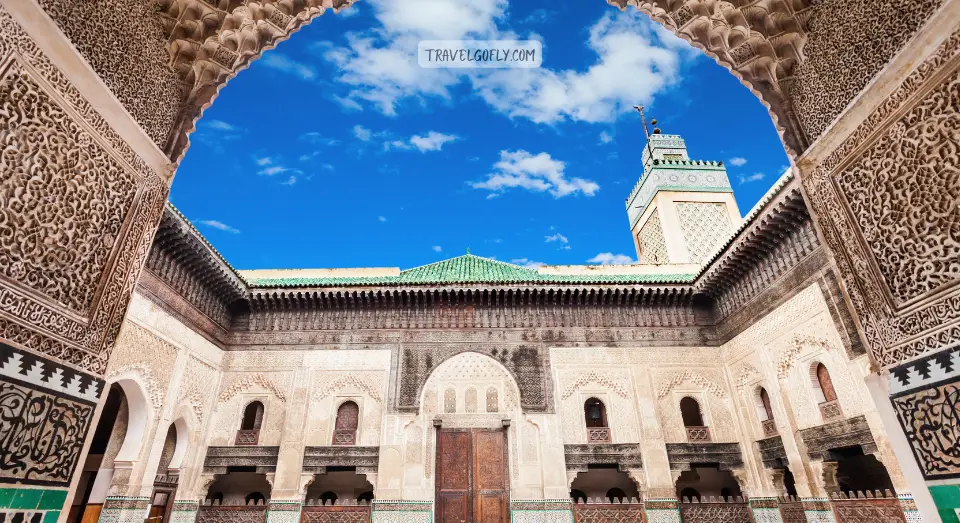 Often considered the most beautiful madrasa in Morocco, Bou Inania stands as the only madrasa in Fes that also functions as a mosque. Built between 1350-1356, it represents the zenith of Marinid artistry with its stunning combination of marble, onyx, carved cedar, and intricate tilework.
Often considered the most beautiful madrasa in Morocco, Bou Inania stands as the only madrasa in Fes that also functions as a mosque. Built between 1350-1356, it represents the zenith of Marinid artistry with its stunning combination of marble, onyx, carved cedar, and intricate tilework.
What sets Bou Inania apart is its remarkable state of preservation and the harmony of its proportions. The prayer hall, with its elaborate mihrab and soaring columns, demonstrates how spiritual architecture can elevate the soul. The astronomical clock in the entrance (now non-functional) once called students to prayer with mechanical precision.
Location: Near Bab Boujloud, easily accessible from the Blue Gate
Opening Hours: Daily 8:00 AM – 6:00 PM (closed during prayer times)
Entrance Fee: MAD 20 (approximately $2 USD)
Best Time to Visit: Morning for fewer crowds and better photography light
Time Needed: 45 minutes – 1 hour
Insider Tip: Look for the different geometric patterns – each has symbolic meaning in Islamic art
Accessibility Note: Multiple levels with stairs; ground floor accessible
6. Bab Boujloud (Blue Gate): The Iconic Gateway to Old Fes
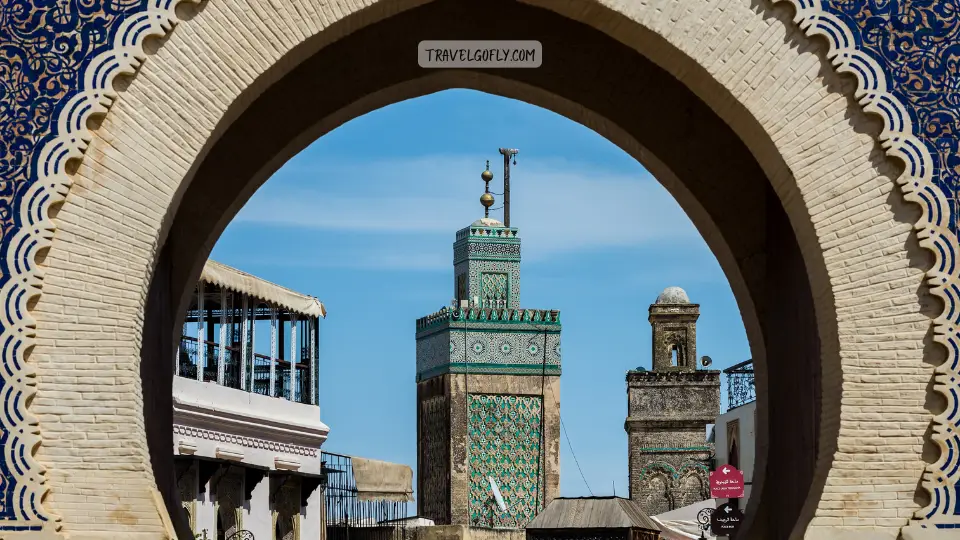 No visit to Fes is complete without passing through the magnificent Bab Boujloud, the ornate entrance gate that serves as the most photographed symbol of the city. Built in 1913 during the French Protectorate, this horseshoe-arched gateway perfectly blends Moorish and contemporary design elements.
No visit to Fes is complete without passing through the magnificent Bab Boujloud, the ornate entrance gate that serves as the most photographed symbol of the city. Built in 1913 during the French Protectorate, this horseshoe-arched gateway perfectly blends Moorish and contemporary design elements.
The gate distinctive blue and green tilework creates a stunning contrast – blue on the exterior (representing the color of Fes) and green on the interior (symbolizing Islam). Beyond the gate, the medina main thoroughfare buzzes with activity as vendors, students, and tourists merge in a colorful human river flowing toward the heart of the ancient city.
Location: Main entrance to Fes el-Bali from Place Boujloud
Opening Hours: Always open
Entrance Fee: Free
Best Time to Visit: Golden hour (sunrise/sunset) for best photography
Time Needed: 15-20 minutes for photos and entry
Insider Tip: The gate looks spectacular when lit up at night
Accessibility Note: Fully accessible
7. Dar Batha Museum: Treasures of Moroccan Art and Culture
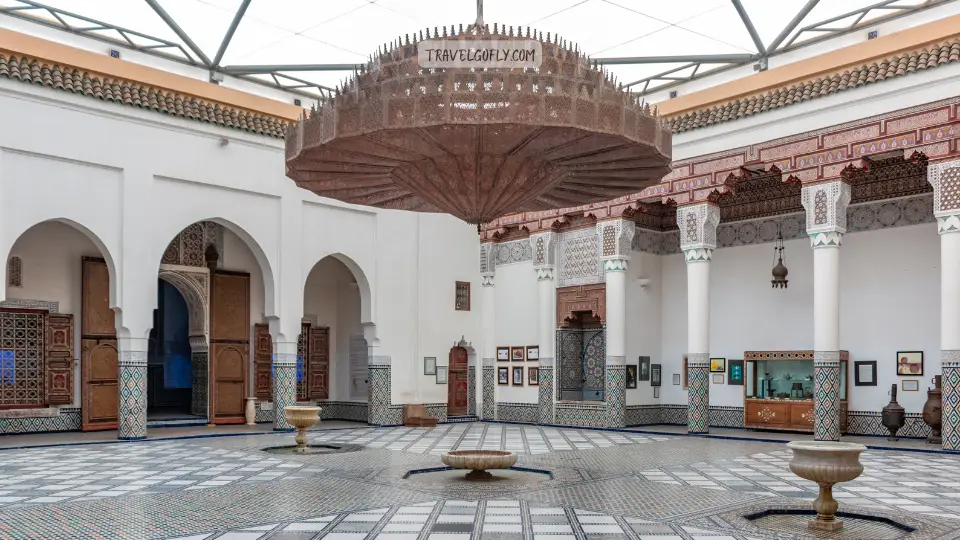 Housed in a 19th-century palace built for Sultan Hassan I, Dar Batha Museum presents Morocco artistic heritage in an authentic setting. The Hispano-Moorish architecture of the building complements the exceptional collection of ceramics, textiles, manuscripts, and traditional crafts from the Fes region.
Housed in a 19th-century palace built for Sultan Hassan I, Dar Batha Museum presents Morocco artistic heritage in an authentic setting. The Hispano-Moorish architecture of the building complements the exceptional collection of ceramics, textiles, manuscripts, and traditional crafts from the Fes region.
The museum Andalusian garden, with its central fountain and orange trees, provides a peaceful respite from the medina intensity. Don’t miss the exceptional collection of Fassi ceramics and the traditional Moroccan wedding costumes that showcase the region textile traditions.
Location: Between Fes el-Bali and Fes el-Jdid, near Bab Boujloud
Opening Hours: Daily 8:30 AM – 5:00 PM (closed Tuesdays)
Entrance Fee: MAD 20 (approximately $2 USD)
Best Time to Visit: Morning when the garden light is best
Time Needed: 1-1.5 hours
Insider Tip: The museum shop has high-quality replicas of pieces in the collection
Accessibility Note: Garden level accessible; some upper floors require stairs
8. Place Seffarine: The Heartbeat of Fes Metalworking Tradition
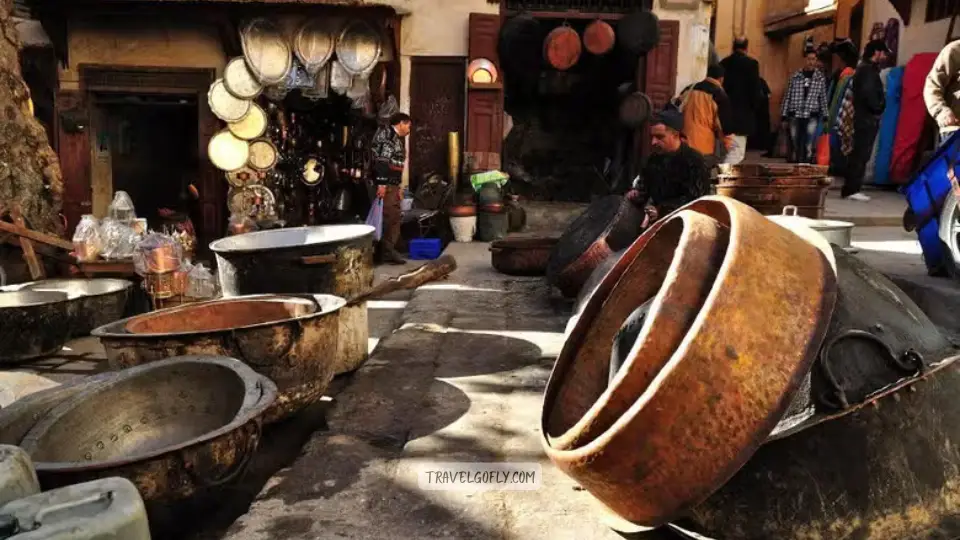 The rhythmic hammering that echoes through Place Seffarine has continued uninterrupted for over 700 years, making it one of the most atmospheric spots in the medina. This small square serves as the center of Fes copper and brass industry, where artisans shape metal into everything from traditional tagines to intricate decorative pieces.
The rhythmic hammering that echoes through Place Seffarine has continued uninterrupted for over 700 years, making it one of the most atmospheric spots in the medina. This small square serves as the center of Fes copper and brass industry, where artisans shape metal into everything from traditional tagines to intricate decorative pieces.
Watch master craftsmen transform sheets of copper into beautiful vessels using techniques passed down through generations. The surrounding workshops offer fascinating glimpses into one of Morocco most important traditional trades, and the finished products make excellent souvenirs.
Location: Near Al-Kairaouine Mosque, central Fes el-Bali
Opening Hours: Workshops typically open 8:00 AM – 6:00 PM
Entrance Fee: Free to observe
Best Time to Visit: Mid-morning when most artisans are working
Time Needed: 30-45 minutes
Insider Tip: Many craftsmen welcome respectful observation and questions about their work
Accessibility Note: Uneven cobblestone square with narrow surrounding alleys
9. Moulay Idriss Zawiya: Morocco Most Sacred Shrine
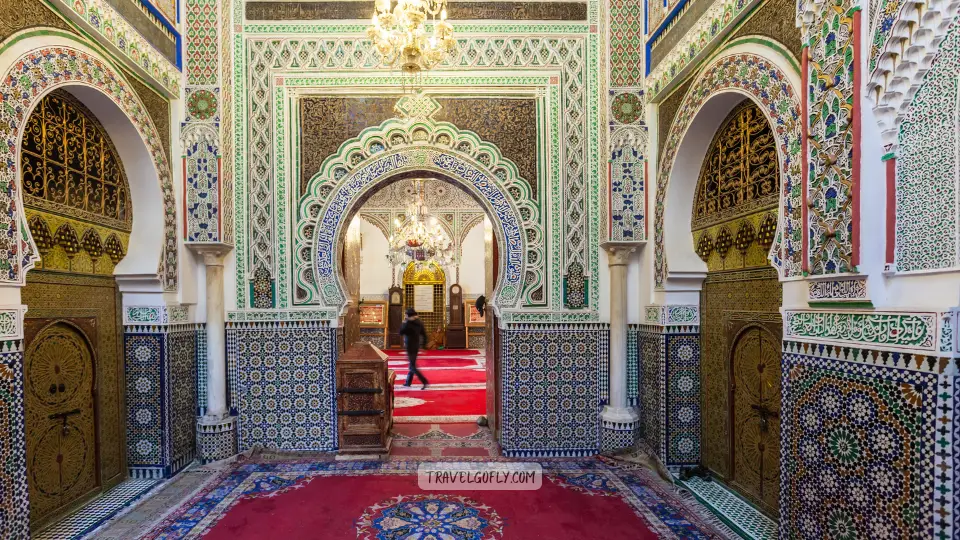 Though non-Muslims cannot enter the Zawiya (shrine) of Moulay Idriss, the founder of Fes and great-grandson of Prophet Mohammed, the surrounding area pulses with spiritual energy. The green-tiled pyramid roof and ornate entrance showcase traditional Moroccan religious architecture.
Though non-Muslims cannot enter the Zawiya (shrine) of Moulay Idriss, the founder of Fes and great-grandson of Prophet Mohammed, the surrounding area pulses with spiritual energy. The green-tiled pyramid roof and ornate entrance showcase traditional Moroccan religious architecture.
The streets surrounding the zawiya offer insights into daily religious life in Fes. Local people come here for blessings, particularly expectant mothers and those seeking divine intervention. The respect and reverence shown by locals provides a window into the deep spiritual traditions that continue to shape Moroccan society.
Location: Central Fes el-Bali, near the Kairaouine Mosque
Opening Hours: External viewing always available
Entrance Fee: Free
Best Time to Visit: Any time, but be especially respectful during prayer times
Time Needed: 15-20 minutes for observation and context
Insider Tip: The wooden barriers mark the sacred space that non-Muslims should not cross
Accessibility Note: Surrounding streets have steps and narrow passages
10. Chaouwara Quarter: Immerse Yourself in Local Life
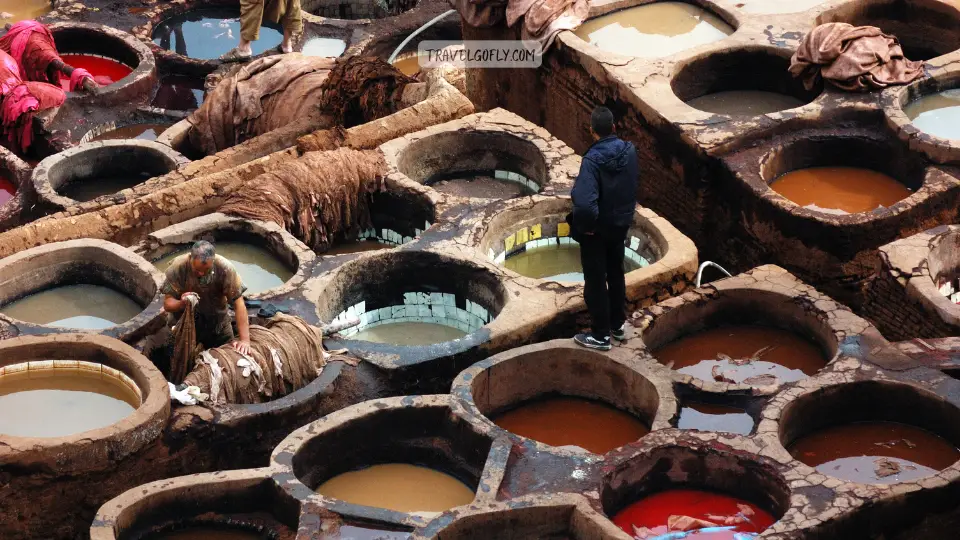 Venture into the Chaouwara Quarter, one of the medina most authentic residential neighborhoods, to experience daily life away from the main tourist routes. Here, children play in small squares while women chat on doorsteps, and the only sounds are those of ordinary life – cooking, conversation, and the call to prayer.
Venture into the Chaouwara Quarter, one of the medina most authentic residential neighborhoods, to experience daily life away from the main tourist routes. Here, children play in small squares while women chat on doorsteps, and the only sounds are those of ordinary life – cooking, conversation, and the call to prayer.
This area offers a glimpse into the medina as a living community rather than a historical monument. Small neighborhood mosques, traditional bread ovens, and local groceries (hanout) serving residents provide authentic cultural experiences that mass tourism hasn’t touched.
Location: Northeastern section of Fes el-Bali
Opening Hours: Always accessible
Entrance Fee: Free
Best Time to Visit: Late afternoon when community life is most visible
Time Needed: 1-2 hours for wandering
Insider Tip: Bring small gifts like pencils or candies for children, but ask permission before photographing residents
Accessibility Note: Narrow streets with occasional stairs; some areas challenging for wheelchairs
11. Ess-Sabaghine Dye Souk: Where Colors Come to Life
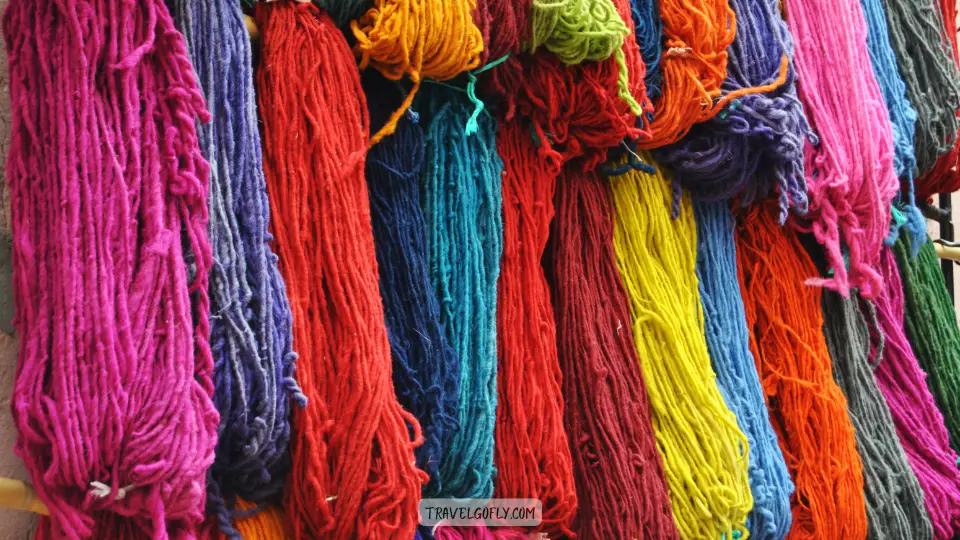 The Ess-Sabaghine Quarter concentrates Fes traditional dyeing industry, where artisans create the brilliant colors that adorn everything from carpets to clothing. The hanging skeins of wool in every imaginable hue create a rainbow canopy over the narrow streets, while the air fills with the earthy scents of natural dyes.
The Ess-Sabaghine Quarter concentrates Fes traditional dyeing industry, where artisans create the brilliant colors that adorn everything from carpets to clothing. The hanging skeins of wool in every imaginable hue create a rainbow canopy over the narrow streets, while the air fills with the earthy scents of natural dyes.
Watch as masters mix traditional ingredients – pomegranate for yellows, indigo for blues, henna for reds – using recipes perfected over centuries. The quarter also houses many carpet workshops where you can see weavers at work on elaborate traditional patterns.
Location: Western section of Fes el-Bali, near the Andalous Mosque
Opening Hours: Daily 8:00 AM – 6:00 PM
Entrance Fee: Free to explore
Best Time to Visit: Morning when drying processes are most active
Time Needed: 45 minutes – 1 hour
Insider Tip: Some workshops offer mini-demonstrations of dyeing techniques
Accessibility Note: Narrow alleys with uneven surfaces
12. Foundouk el-Nejjarrine: A Living Museum of Commerce
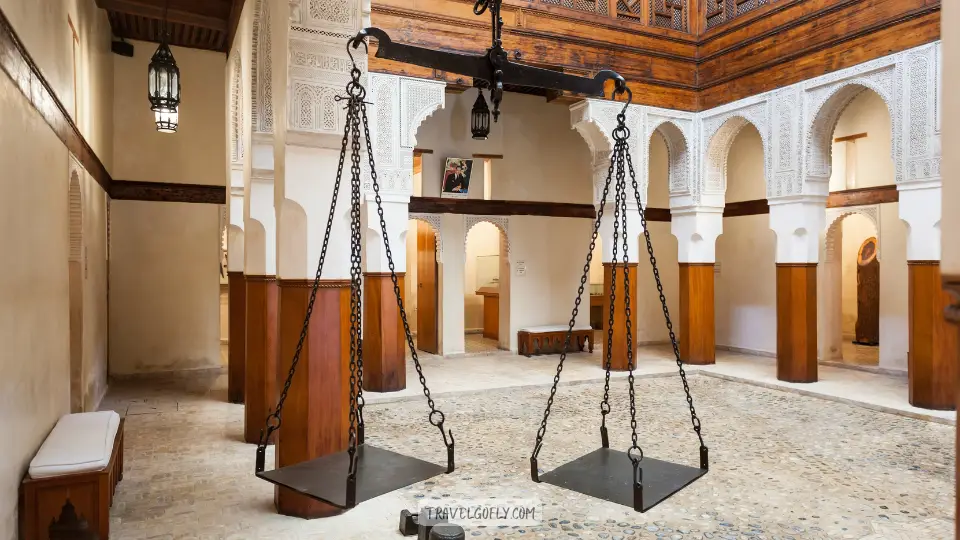 This beautifully restored 18th-century caravanserai represents the commercial heritage that made Fes wealthy. Originally built to house traveling merchants and their goods, it now demonstrates how trans-Saharan trade routes centered on Fes and spread Moroccan craftsmanship throughout North Africa.
This beautifully restored 18th-century caravanserai represents the commercial heritage that made Fes wealthy. Originally built to house traveling merchants and their goods, it now demonstrates how trans-Saharan trade routes centered on Fes and spread Moroccan craftsmanship throughout North Africa.
The three-story structure around a central courtyard housed merchants on the upper floors while their animals and goods occupied the ground level. Today, the foundouk continues to serve artisans and small merchants, maintaining its commercial function while showcasing traditional architecture.
Location: Nejjarine Square, near the fountain
Opening Hours: Daily 8:00 AM – 6:00 PM
Entrance Fee: Free to view courtyard
Best Time to Visit: Mid-morning when artisans are most active
Time Needed: 30 minutes
Insider Tip: Look for the different door styles indicating the original tenant trade
Accessibility Note: Central courtyard accessible; upper levels require stairs
13. Al-Andalous Quarter: Echoes of Spanish Morocco
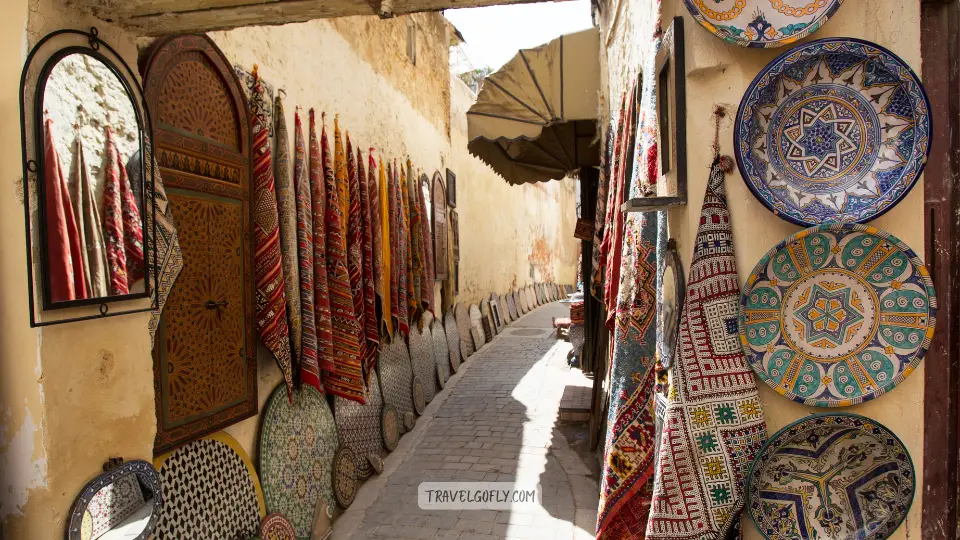 The Al-Andalous Quarter preserves the legacy of Moorish refugees who fled Spain after the Reconquista, bringing advanced architectural and artistic techniques that enhanced Fes already rich cultural tapestry. The quarter centers around the Al-Andalous Mosque, one of Fes most important religious sites after the Kairaouine.
The Al-Andalous Quarter preserves the legacy of Moorish refugees who fled Spain after the Reconquista, bringing advanced architectural and artistic techniques that enhanced Fes already rich cultural tapestry. The quarter centers around the Al-Andalous Mosque, one of Fes most important religious sites after the Kairaouine.
The area showcases distinctive Andalousian architectural elements – intricate geometric tilework, horseshoe arches, and courtyard gardens that reflect the sophisticated urban planning of Muslim Spain. Walking these streets feels like traveling through layers of history where Moroccan and Spanish Islamic cultures merged.
Location: Eastern section of Fes el-Bali, across the Fes River from Kairaouine
Opening Hours: Always accessible
Entrance Fee: Free
Best Time to Visit: Afternoon for architecture appreciation
Time Needed: 1-1.5 hours
Insider Tip: Notice the subtle architectural differences from other medina areas
Accessibility Note: Some narrow bridges and uneven surfaces
14. Henna Souk: Natural Beauty Traditions
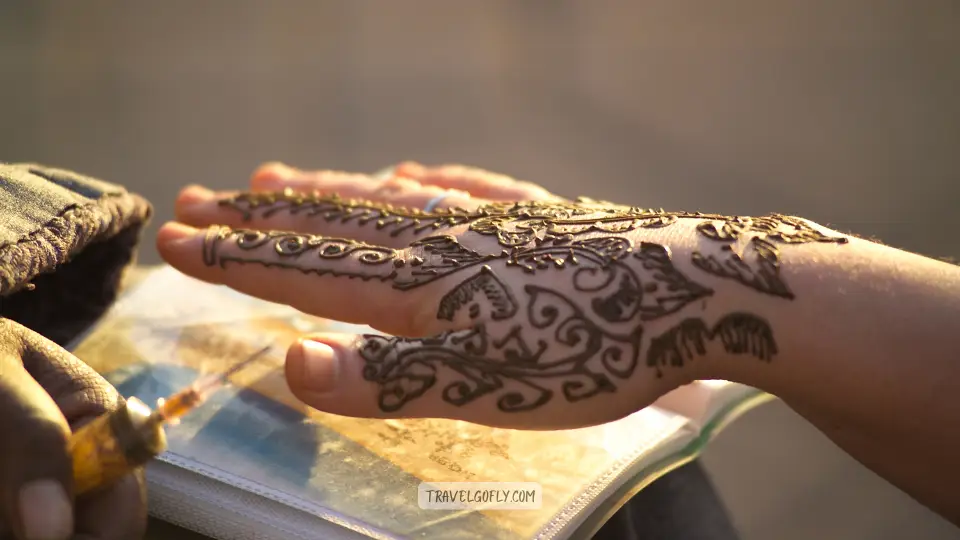 The Henna Souk specializes in traditional beauty and health products derived from natural ingredients that Moroccan women have used for centuries. Beyond the famous henna used for intricate temporary tattoos, you’ll find argan oil, black soap (beldi), various clay masks, and herbal remedies.
The Henna Souk specializes in traditional beauty and health products derived from natural ingredients that Moroccan women have used for centuries. Beyond the famous henna used for intricate temporary tattoos, you’ll find argan oil, black soap (beldi), various clay masks, and herbal remedies.
Local vendors offer mini-consultations on traditional beauty treatments while demonstrating application techniques. The souk also stocks traditional kohl, various oils for hair and skin, and handmade soaps scented with herbs and flowers grown in the Moroccan countryside.
Location: Near the main thoroughfare of Talaa Kbira
Opening Hours: Daily 8:00 AM – 7:00 PM
Entrance Fee: Free to browse
Best Time to Visit: Morning for freshest products and least crowded
Time Needed: 30-45 minutes
Insider Tip: Test products on a small skin area first; ask for demonstrations of henna application
Accessibility Note: Narrow aisles between stalls
15. Rcif Square & The Old Clock Tower: Evening Gathering Place
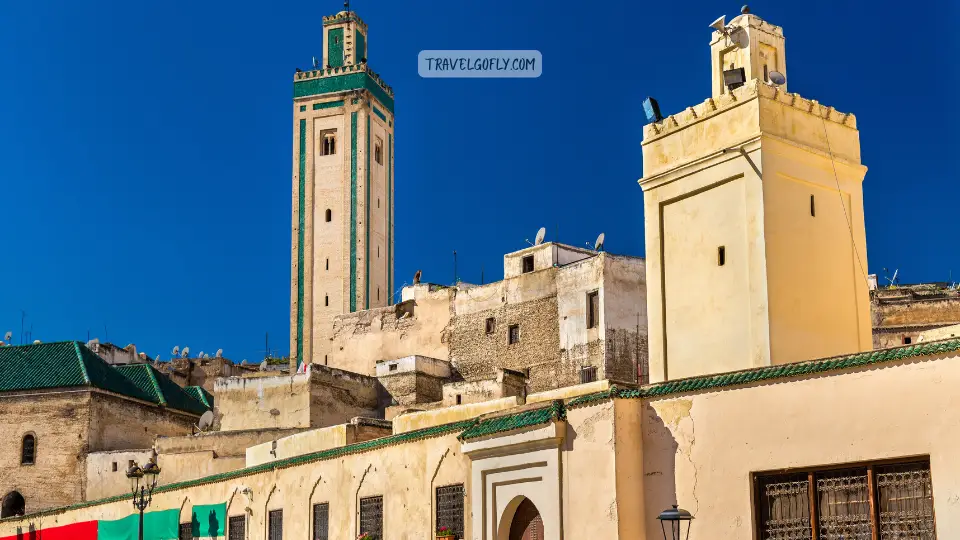 Rcif Square serves as one of the medina main social gathering places, especially in the evening when families emerge to enjoy the cooler air. The square, dominated by an old clock tower, provides one of the few open spaces within the dense medina where you can observe the rhythm of local life.
Rcif Square serves as one of the medina main social gathering places, especially in the evening when families emerge to enjoy the cooler air. The square, dominated by an old clock tower, provides one of the few open spaces within the dense medina where you can observe the rhythm of local life.
Street performers, tea vendors, and food stalls create a lively atmosphere as the day transitions to night. The square also serves as a major transportation hub where various medina routes converge, making it an excellent orientation point for navigating the maze-like streets.
Location: Northeast section of Fes el-Bali
Opening Hours: Always open; liveliest 5:00 PM – 9:00 PM
Entrance Fee: Free
Best Time to Visit: Late afternoon and evening
Time Needed: 30 minutes – 1 hour
Insider Tip: Try the fresh orange juice from local vendors – it’s some of the best in Morocco
Accessibility Note: Large, relatively flat square suitable for wheelchairs
Beyond the Medina Walls: Exploring Fes el-Jdid & Mellah
While Fes el-Bali captures most visitors attention, the adjacent quarters offer equally compelling stories and complement your understanding of this complex city history.
Royal Palace (Dar el-Makhzen): Magnificent from the Outside
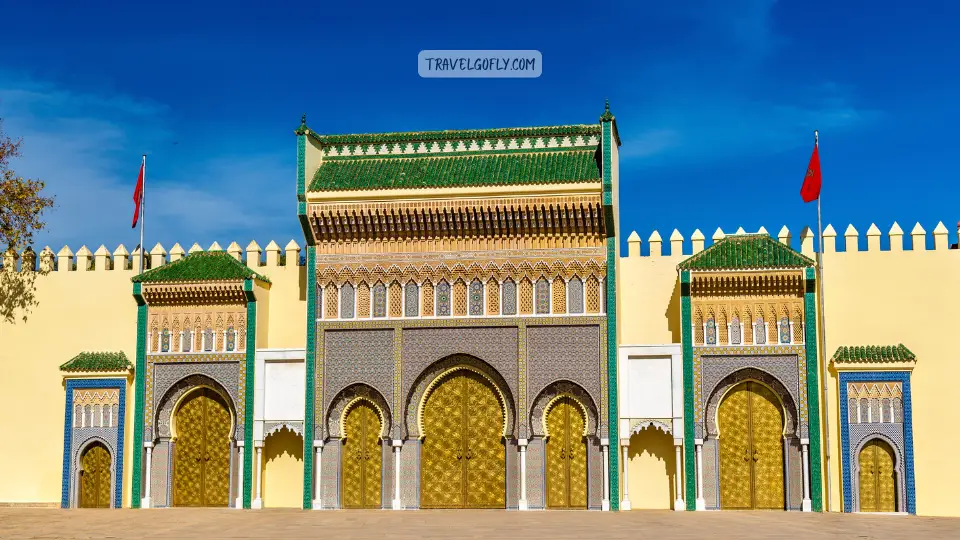 The imposing golden doors of the Royal Palace create one of Morocco most photographed facades, even though the palace itself remains closed to visitors. Built in the 13th century and continuously expanded, the complex covers over 195 acres and serves as one of the king official residences.
The imposing golden doors of the Royal Palace create one of Morocco most photographed facades, even though the palace itself remains closed to visitors. Built in the 13th century and continuously expanded, the complex covers over 195 acres and serves as one of the king official residences.
The elaborate bronze doors, intricate tilework, and perfectly manicured gardens visible from Place des Alaouites showcase the finest examples of contemporary Moroccan craftsmanship. The palace gates alone required seven years to complete, with master artisans creating the geometric patterns that seem to shift and dance in changing light.
Location: Heart of Fes el-Jdid
Opening Hours: Exterior viewable daily
Entrance Fee: Free
Best Time to Visit: Morning or late afternoon for best photography
Time Needed: 30 minutes
Insider Tip: The adjacent Lalla Mina gardens are sometimes open to the public
Accessibility Note: The viewing area is fully accessible
Mellah (Jewish Quarter): Morocco Multicultural Legacy
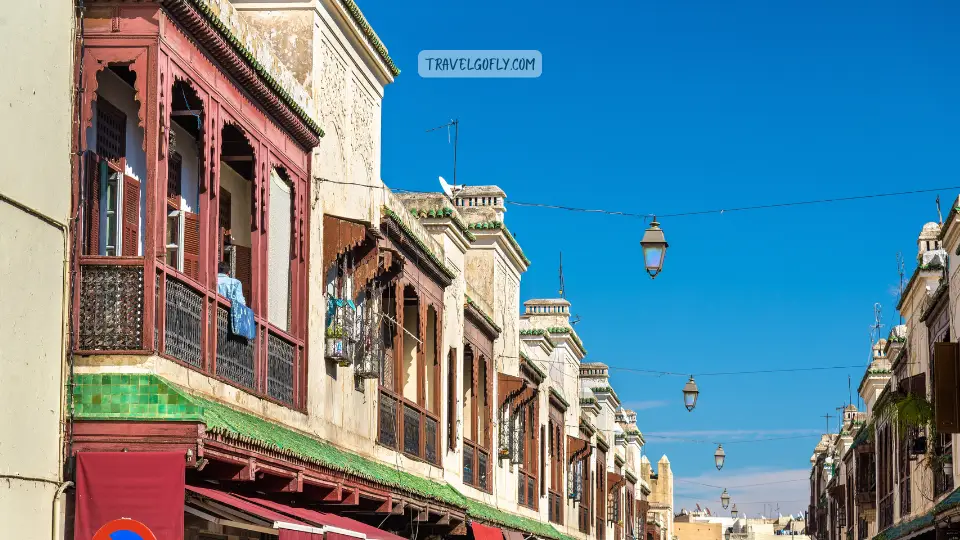 The Mellah bears witness to Fes once-thriving Jewish community, which played crucial roles in trade, diplomacy, and craftsmanship for over 1,000 years. Established in the 15th century, this walled quarter protected Jewish residents while fostering cultural exchange that enriched all of Fes.
The Mellah bears witness to Fes once-thriving Jewish community, which played crucial roles in trade, diplomacy, and craftsmanship for over 1,000 years. Established in the 15th century, this walled quarter protected Jewish residents while fostering cultural exchange that enriched all of Fes.
Walking through the Mellah reveals architectural differences from the Islamic medina – balconies facing the street, different door styles, and the remains of synagogues. The deteriorating buildings tell stories of a community that largely emigrated after Moroccan independence, leaving behind a complex legacy of coexistence and cultural fusion.
Location: Adjacent to the Royal Palace in Fes el-Jdid
Opening Hours: Always accessible
Entrance Fee: Free
Best Time to Visit: Late morning for best light
Time Needed: 1-1.5 hours
Insider Tip: Visit the Jewish cemetery on the hillside for historical context and city views
Accessibility Note: Some narrow streets and stairs
Borj Nord & Borj Sud: Panoramic Views Over Fes
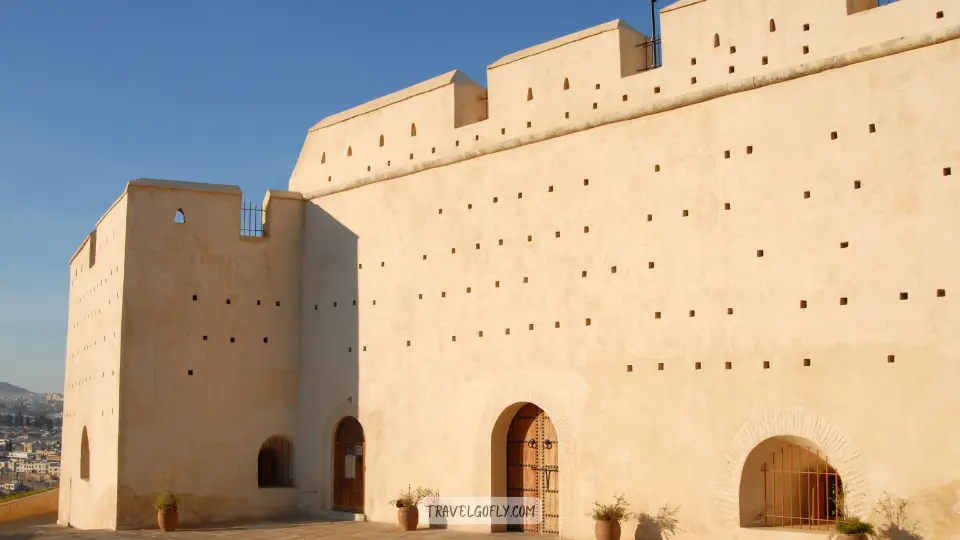 These 16th-century fortresses, built by Saadian sultan Ahmad al-Mansur, offer the best panoramic views over Fes and house important museums. Borj Nord contains the Arms Museum with its collection of weapons from various periods of Moroccan history, while Borj Sud provides stunning photographic opportunities.
These 16th-century fortresses, built by Saadian sultan Ahmad al-Mansur, offer the best panoramic views over Fes and house important museums. Borj Nord contains the Arms Museum with its collection of weapons from various periods of Moroccan history, while Borj Sud provides stunning photographic opportunities.
The climb to either fortress rewards visitors with breathtaking vistas over the medina terracotta rooftops, the green belt of the Fes River valley, and the Middle Atlas Mountains on clear days. These elevated perspectives help visitors understand Fes urban layout and geographical setting.
Location: Hills north and south of the medina
Opening Hours: Daily 8:30 AM – 5:00 PM
Entrance Fee: MAD 20 for museum access
Best Time to Visit: Late afternoon for sunset views
Time Needed: 1-2 hours including transport
Insider Tip: Borj Sud offers better photography opportunities; Borj Nord has more historical exhibits
Accessibility Note: Requires uphill transport; fortresses have stairs
Immerse Yourself: Unique Cultural Experiences & Hidden Gems in Fes
Beyond sightseeing, Fes offers immersive experiences that create lasting connections with Moroccan culture and traditions. These activities transform visitors from observers into participants in the city living heritage.
Take a Traditional Moroccan Cooking Class
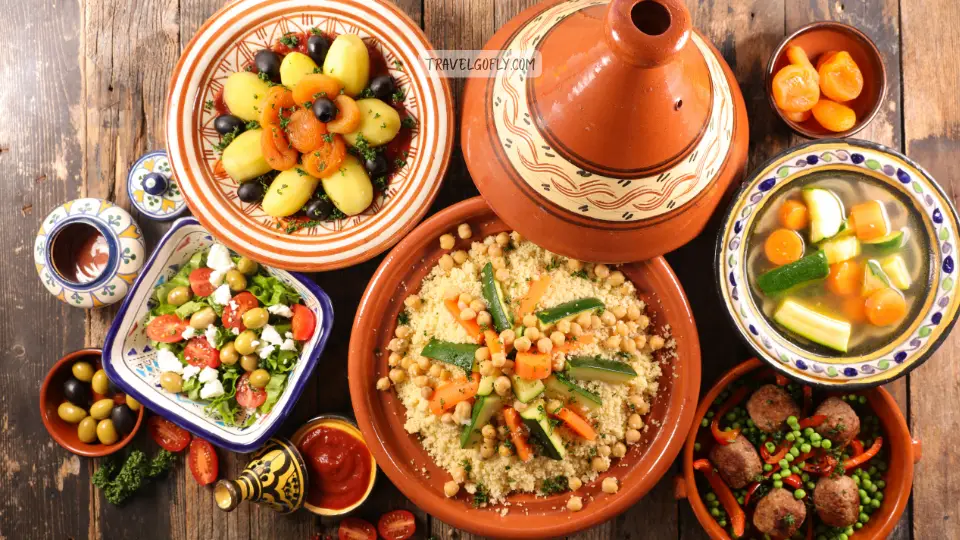 Learning to prepare authentic Moroccan cuisine provides insights into the country culture that go far beyond recipes. Cooking classes typically begin with trips to local markets where instructors explain spice combinations, seasonal ingredients, and traditional preparation methods passed down through generations.
Learning to prepare authentic Moroccan cuisine provides insights into the country culture that go far beyond recipes. Cooking classes typically begin with trips to local markets where instructors explain spice combinations, seasonal ingredients, and traditional preparation methods passed down through generations.
Classes usually focus on signature dishes like chicken tagine, couscous, pastilla, or traditional bread. The hands-on experience teaches not just techniques but the social and cultural significance of food in Moroccan life. Most classes conclude with communal meals where participants share their creations while learning about Moroccan dining customs.
Several riads and cultural centers offer cooking experiences, from basic tagine workshops to comprehensive day-long programs including market visits and multiple courses. Prices range from MAD 350-800 depending on duration and group size.
Discover Artisan Workshops (Zellij, Brass, Weaving)
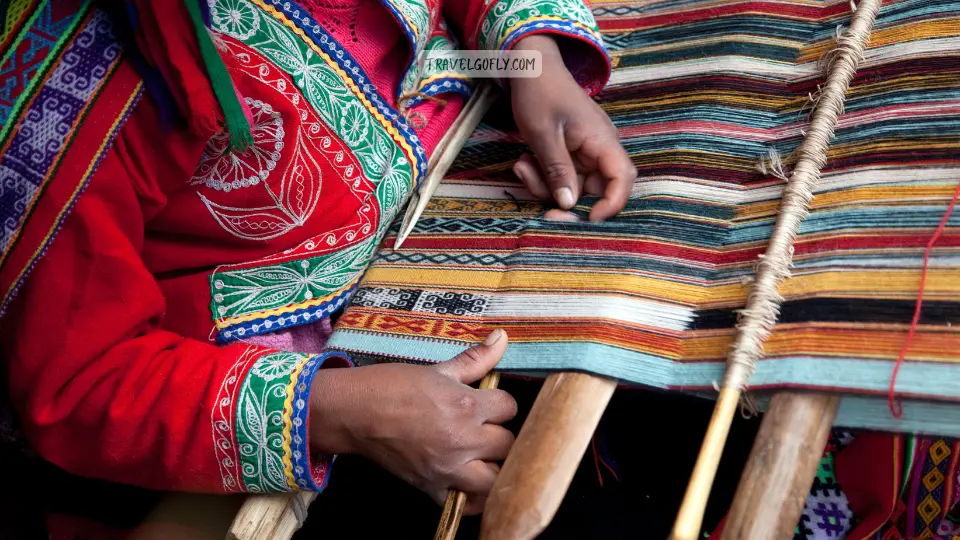 Fes reputation as Morocco artisan capital stems from workshops where master craftsmen continue practicing trades unchanged for centuries. Observing these artists at work provides understanding of the skill, patience, and cultural knowledge required to create Morocco famous handicrafts.
Fes reputation as Morocco artisan capital stems from workshops where master craftsmen continue practicing trades unchanged for centuries. Observing these artists at work provides understanding of the skill, patience, and cultural knowledge required to create Morocco famous handicrafts.
Zellij (mosaic tilework) workshops demonstrate how artisans hand-cut geometric tiles and assemble them into complex patterns without pre-drawn designs. The process requires years of training to master the 260+ traditional shapes and their combinations. Many workshops welcome respectful visitors, especially if introduced by a knowledgeable guide.
The brass and copper workshops around Place Seffarine show the entire process from raw metal sheets to finished products. Weaving cooperatives, particularly in the Chaouwara quarter, demonstrate carpet and textile production using traditional looms and patterns passed down through families.
Experience a Hammam (Local vs. Tourist Spa)
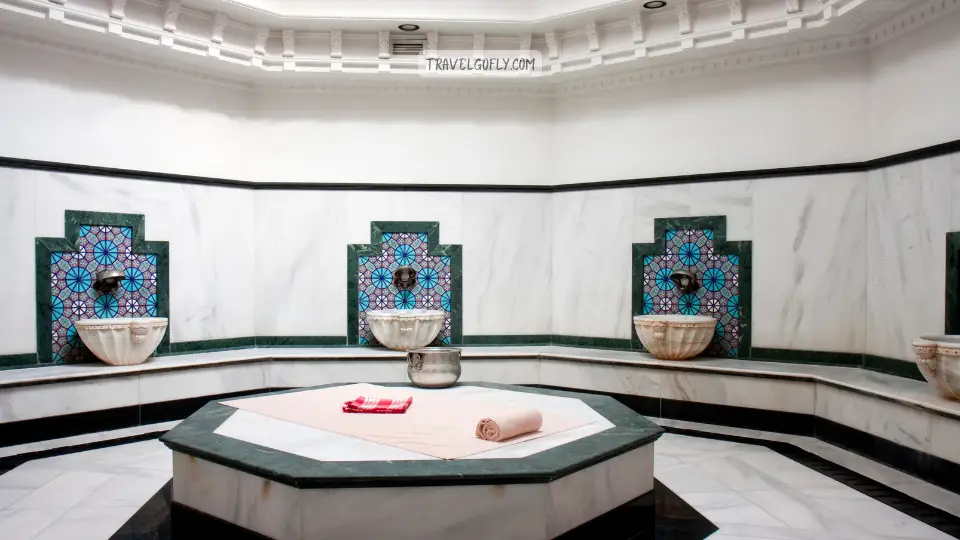 The hammam experience represents one of Morocco most important social and cultural traditions, serving functions far beyond simple bathing. Traditional neighborhood hammams are community gathering places where locals come not just for cleansing but for social interaction and relaxation.
The hammam experience represents one of Morocco most important social and cultural traditions, serving functions far beyond simple bathing. Traditional neighborhood hammams are community gathering places where locals come not just for cleansing but for social interaction and relaxation.
Tourist-oriented spa hammams offer luxurious experiences with English-speaking staff and comfortable amenities. However, local hammams provide more authentic cultural experiences, though they require understanding of basic protocols and comfort with communal bathing.
A typical hammam session includes steaming in hot rooms, vigorous scrubbing with kessa gloves, argan oil treatments, and relaxation periods. The process, whether in upscale spas or neighborhood facilities, leaves participants feeling renewed and provides insights into Moroccan wellness traditions.
Attend a Sufi Music Performance
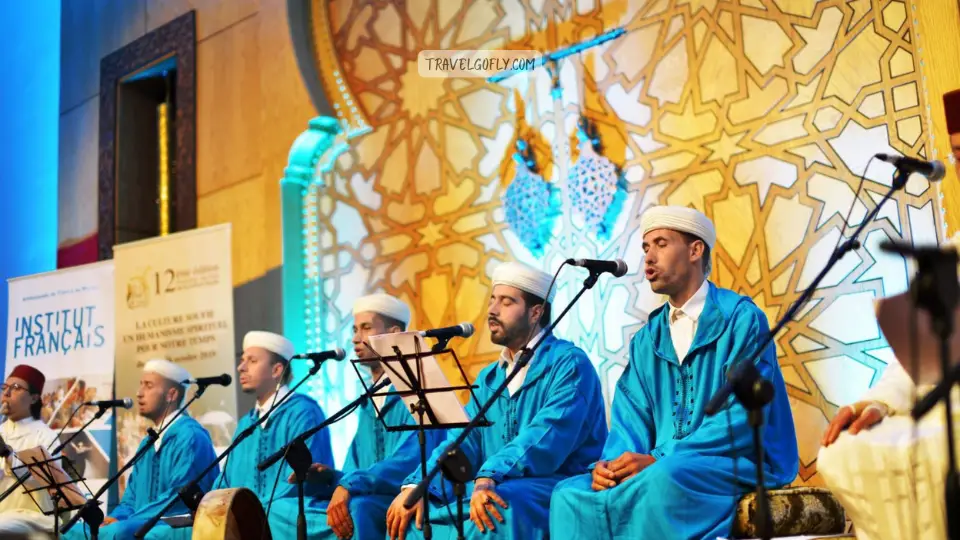 Sufi music represents the mystical dimension of Islamic culture, using rhythm, melody, and repetitive movements to achieve spiritual transcendence. Several venues in Fes occasionally host performances, particularly during cultural festivals or special occasions.
Sufi music represents the mystical dimension of Islamic culture, using rhythm, melody, and repetitive movements to achieve spiritual transcendence. Several venues in Fes occasionally host performances, particularly during cultural festivals or special occasions.
The most accessible performances occur at cultural centers like Dar Tazi or during organized cultural evenings at larger riads. Authentic Sufi ceremonies happen at zawiyas (religious lodges), though these require special permissions and cultural sensitivity.
The hypnotic rhythms, traditional instruments like the oud and bendir drums, and spiritual atmosphere create profound experiences for those interested in Morocco mystical traditions. However, these performances are irregular and often require local contacts to access.
Get Lost (Safely) in a Quieter Medina Neighborhood
While the main thoroughfares teem with tourists and vendors, the residential areas of Fes el-Bali offer glimpses into daily life largely unchanged for centuries. The Kechla Quarter, in the medina southeastern section, provides excellent opportunities for cultural immersion.
Here, narrow alleys wind between traditional houses where families have lived for generations. Small neighborhood mosques, communal ovens where residents bake bread, and tiny shops serving daily necessities create authentic urban village atmospheres within the larger medina.
Wandering these areas requires basic Arabic or French phrases, cultural sensitivity, and patience. Residents are generally welcoming to respectful visitors, especially those showing genuine interest in local life rather than seeking commercial transactions.
Enjoy Mint Tea with a Local Family
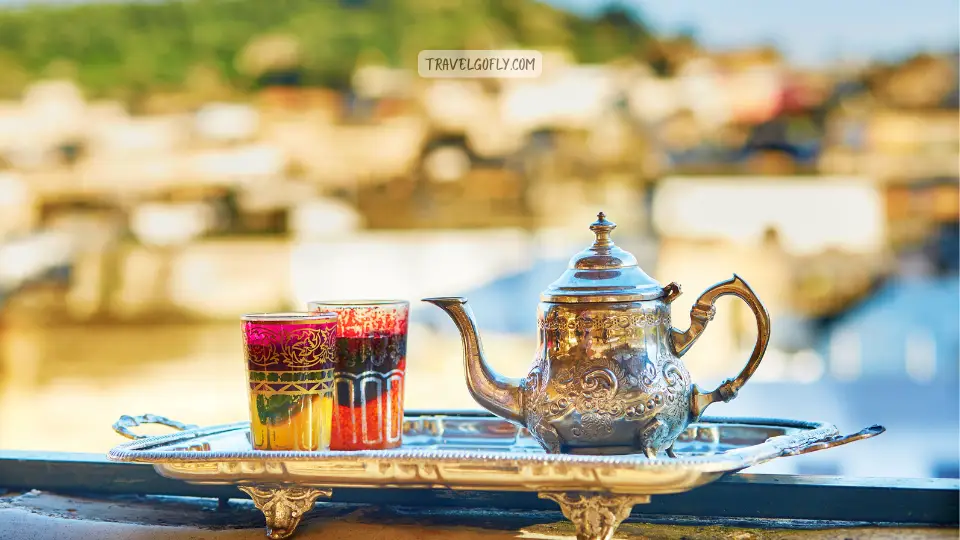 Sharing mint tea constitutes one of Morocco most sacred hospitality traditions, representing friendship, respect, and cultural exchange. Several organizations and individual families in Fes offer authentic cultural exchanges through tea ceremonies in traditional homes.
Sharing mint tea constitutes one of Morocco most sacred hospitality traditions, representing friendship, respect, and cultural exchange. Several organizations and individual families in Fes offer authentic cultural exchanges through tea ceremonies in traditional homes.
These experiences typically include tours of traditional houses, explanations of daily life in the medina, discussions about Moroccan culture and current events, and of course, preparation and sharing of the perfect mint tea. The ritual of tea preparation – the specific proportion of tea, mint, and sugar, and the dramatic pouring technique – carries deep cultural significance.
Such authentic encounters often emerge naturally through extended interactions with shopkeepers, guides, or other locals. Several cultural organizations also arrange formal programs connecting visitors with local families interested in cultural exchange.
Taste of Fes: A Food Lover Essential Guide
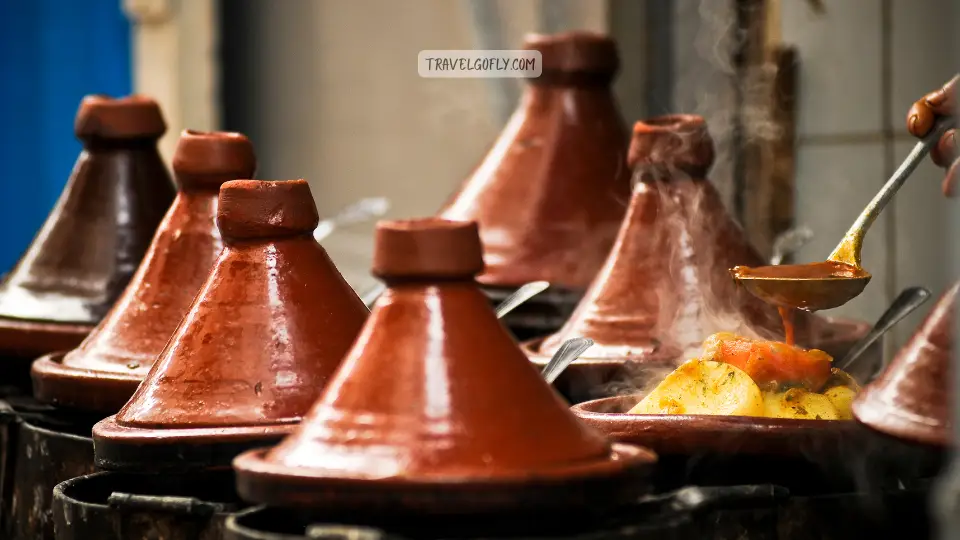 Fes culinary traditions reflect the city position as a crossroads of African, Arab, and Mediterranean influences, refined by centuries of palace cuisine and regional ingredients. The city food culture rewards adventurous eaters with complex flavors and surprising combinations.
Fes culinary traditions reflect the city position as a crossroads of African, Arab, and Mediterranean influences, refined by centuries of palace cuisine and regional ingredients. The city food culture rewards adventurous eaters with complex flavors and surprising combinations.
Must-Try Fassi Dishes
Tagine Fassi differs from tourist versions through subtle spicing and traditional cooking techniques. The clay vessels conduct heat evenly, allowing ingredients to meld without overcooking. Local variations include chicken with preserved lemons and olives, or lamb with prunes and almonds.
Pastilla reaches its pinnacle in Fes, where the delicate phyllo-like warqa pastry encases spiced pigeon or chicken with almonds, cinnamon, and eggs. The contrast between sweet and savory, crispy and tender, makes this dish unforgettable.
Harira, particularly during Ramadan, shows regional variations unique to Fes. The tomato-based soup includes lentils, chickpeas, and meat, often enriched with tadouira (a flour and fresh herbs mixture) for body and flavor.
Bissara, a creamy fava bean soup, appears on winter morning menus throughout the medina. Served with olive oil, cumin, and fresh bread, it provides warming comfort food beloved by locals.
Makouda (potato fritters) from street vendors offer quick, delicious snacks often stuffed into bread with harissa and vegetables, creating satisfying sandwich meals.
Street food in Fes ranges from impromptu vendors with single specialties to established stalls with decades of loyal customers. The area around Bab Boujloud and R’cif Square concentrates many excellent options, while the Talaa Kbira offers continuous opportunities for sampling.
Traditional restaurants often occupy converted riads, offering atmospheric dining in beautiful surroundings. These establishments typically serve multiple courses in traditional style – bread, salads, tagines, and desserts with mint tea.
Modern Moroccan cuisine appears in the Ville Nouvelle, where chefs reinterpret traditional dishes with contemporary techniques. These restaurants often cater to local professionals and provide insights into evolving Moroccan culinary culture.
Best Areas for Street Food
The plaza in front of Bab Boujloud transforms each evening into an open-air food court where vendors prepare fresh meals over portable gas burners. Options include various tagines, grilled meats, soups, and sweets in convivial atmosphere.
The area around the Andalous Mosque offers daytime street food, including fresh fruit vendors, bread sellers, and women preparing couscous and tagines for workers and students. This represents authentic local eating rather than tourist-oriented food.
Late-night options concentrate around R’cif Square, where cafes serve light meals, sweets, and endless pots of mint tea until well after midnight. These locations provide excellent people-watching opportunities in comfortable social settings.
Recommended Riads/Restaurants
Budget Options (Under MAD 150 per person):
- Palais Didi: Family-run restaurant near Bab Boujloud serving traditional Fassi cuisine in intimate setting with excellent tagines and couscous
- Restaurant Fassi: Local institution known for authentic harira and pastilla, frequented by medina residents and workers
Mid-Range Options (MAD 150-400 per person):
- La Maison Bleue: Elegant riad restaurant combining traditional architecture with refined versions of Moroccan classics
- Restaurant Dar Hatim: Atmospheric dining in a restored riad with live traditional music and comprehensive Moroccan menu
Special Occasion (MAD 400+ per person):
- Palais de Fes Dar Tazi: Luxurious palace setting with elaborate multicourse Moroccan feasts and entertainment
- Riad Fes Restaurant: Sophisticated interpretation of regional cuisine in stunning architectural surroundings
Food Souks & Where to Buy Spices/Olives
The Attarine Souk specializes in spices, herbs, and traditional remedies. Vendors here maintain extensive knowledge about their products and often offer preparation advice. Key items include authentic ras el hanout (spice blend), saffron, preserved lemons, and rare spices difficult to find elsewhere.
The olive vendors near the Kairaouine Mosque offer varieties from different regions of Morocco. Look for green olives from Meknes, violet olives from Kalamata-style preparation, and various marinated options. Many vendors allow tasting before purchasing.
Traditional herbal remedies vendors, particularly around Place Seffarine, sell everything from digestive teas to beauty treatments. These require cultural knowledge to navigate, but many vendors speak basic English and enjoy explaining their products’ uses.
Fes Survival Guide: Essential Tips for a Smooth Trip
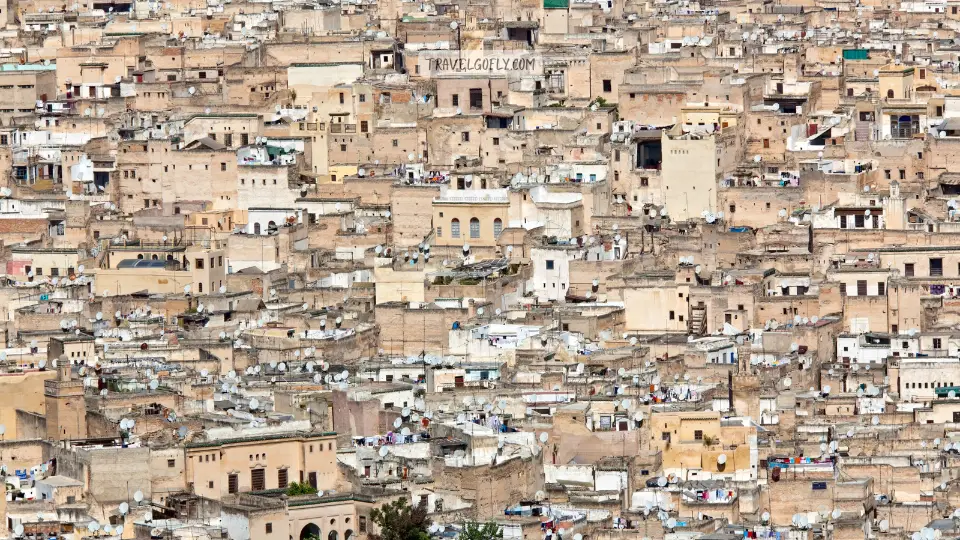 Successfully navigating Fes requires understanding both practical logistics and cultural nuances. These essential tips help ensure your visit is memorable for the right reasons.
Successfully navigating Fes requires understanding both practical logistics and cultural nuances. These essential tips help ensure your visit is memorable for the right reasons.
Getting lost in the Fes medina is inevitable – embrace it as part of the experience rather than fighting it. However, several strategies minimize confusion and frustration.
Learn landmark references: the main thoroughfares (Talaa Kbira and Talaa Sghira), major gates (Bab Boujloud, Bab Ftouh, Bab Guissa), and central places (Place Seffarine, R’cif Square). These create navigation anchors that help orient yourself regardless of your location.
Hiring official guides provides valuable context and helps navigate efficiently, especially for first-time visitors. Licensed guides wear official badges and offer fixed rates for different durations. However, unofficial guides often approach tourists – while some are knowledgeable, others may have ulterior motives regarding shopping commissions.
Smartphone GPS works inconsistently within the medina due to narrow streets and dense construction. Download offline maps before entering the medina, and don’t rely entirely on technology for navigation.
Most importantly, inform someone of your planned route and expected return time. The medina complexity can transform thirty-minute walks into hours-long adventures.
Safety in Fes
Fes is generally safe for tourists exercising normal precautions. Violent crime against visitors is rare, though petty theft and scams occur occasionally.
Common scams include fake guides insisting their services are mandatory, vendors claiming items are “special price, just for you,” and elaborate stories designed to separate tourists from money. The best defense is polite firmness and walking away when situations feel uncomfortable.
Solo female travelers should dress conservatively (covering shoulders and knees) and may experience occasional verbal attention. Most interactions remain respectful, but avoiding isolated areas, especially after dark, provides additional security.
Pickpocketing risks increase in crowded areas like major souks and near tourist attractions. Keep valuables secure and avoid displaying expensive jewelry, cameras, or large amounts of cash.
The medina narrow streets and uneven surfaces require attention while walking. Donkeys, small motorcycles, and steep stairs appear unexpectedly, especially when focused on architecture or navigation.
Shopping & Haggling Etiquette in Fes
Shopping in Fes involves more than transactions – it’s cultural exchange requiring patience, humor, and social skills. Successful haggling depends on understanding the process as entertainment rather than adversarial negotiation.
Fixed-price shops exist but are less common in the medina. Most vendors expect haggling and price items accordingly. Starting offers around 25-30% of the asking price are reasonable, while final prices typically settle around 50-70% of initial quotes.
Quality varies enormously. Traditional crafts made in Fes command premium prices, while imported goods disguised as local products flood many shops. Learning to distinguish authentic pieces requires experience or knowledgeable guides.
Building rapport improves both prices and service. Accept mint tea when offered, ask about vendors’ families or businesses, and show genuine interest in their crafts. These interactions often lead to better deals and insights into Moroccan culture.
Never feel obligated to purchase after viewing merchandise or receiving attention. Politely saying “shukran, la” (thank you, no) usually suffices, though some persistence may continue.
What to Wear in Fes
Conservative dress demonstrates respect for local customs and helps visitors blend into the cultural environment. While Fes is more tolerant than rural areas, appropriate clothing enhances experiences and interactions.
For women, covering shoulders, chest, and knees remains essential in religious areas and traditional neighborhoods. Loose-fitting clothing in breathable fabrics provides comfort in variable climates. Head coverings aren’t required for non-Muslims, though lightweight scarves prove useful for sun protection and entering mosques.
Men should wear long pants and shirts with sleeves when visiting religious sites or traditional areas. Shorts are acceptable in tourist areas and modern neighborhoods but may attract unwanted attention in conservative zones.
Comfortable walking shoes are crucial given the medina uneven surfaces and extended walking distances. Sandals work well in dry weather but closed shoes provide better protection and support.
Consider bringing layers for temperature variations between seasons and times of day. Mornings and evenings can be cool while midday sun creates significant heat, especially in summer months.
Photography Etiquette
Photography in Fes requires sensitivity to local customs and individual privacy. While the city offers countless photogenic opportunities, respectful practices ensure positive interactions.
Always ask permission before photographing people, especially in traditional dress or religious contexts. Many locals appreciate being asked and may pose willingly, while others prefer privacy. Accepting refusals graciously maintains good relations.
Some artisans and vendors welcome photography of their work or workshops but may expect tips or purchases in return. Clarifying expectations beforehand prevents misunderstandings.
Religious sites have varying photography policies. Most allow exterior photos while restricting interior images. When in doubt, ask guides or local authorities for guidance.
The medina narrow streets create challenging lighting conditions. Early morning and late afternoon provide the best natural light, while midday sun creates harsh shadows and contrast.
Connectivity & Wi-Fi in Fes
Internet access in Fes varies significantly between modern and traditional areas. The medina thick walls and narrow streets limit cellular signals and Wi-Fi coverage in many locations.
Most riads and hotels provide Wi-Fi in common areas, though connection speeds and reliability fluctuate. Higher-end accommodations typically offer better connectivity, while budget options may have limited or intermittent service.
Cafes throughout the medina and Ville Nouvelle offer Wi-Fi to customers, providing reliable options for staying connected while exploring. These locations also serve as resting points during long days of sightseeing.
Purchasing local SIM cards provides more reliable mobile connectivity for those needing consistent internet access. Several telecommunications companies offer tourist packages with data allowances suitable for short visits.
Consider downloading offline maps, translation apps, and other essential tools before entering areas with limited connectivity. This preparation ensures navigation and communication capabilities regardless of signal strength.
Tipping Culture in Morocco
Tipping (called “baksheesh”) forms an integral part of service culture in Morocco, supplementing often modest wages across various professions.
Restaurant tips typically range from 10-15% at mid-range establishments, while fine dining venues may expect 15-20%. Street food vendors don’t expect tips, though rounding up bills is appreciated.
Taxi drivers receive tips of MAD 5-10 for short trips or 10% for longer journeys. Negotiating fares beforehand prevents misunderstandings about total costs.
Hotel staff appreciate tips for various services: porters carrying luggage (MAD 10-20), housekeeping (MAD 20-30 per night), and concierge services based on assistance provided.
Licensed guides typically receive MAD 100-200 per day depending on group size and service quality. Unofficial guides may expect similar amounts though their services carry more risks.
Your Perfect Fes Itinerary: 1, 2, and 3-Day Plans
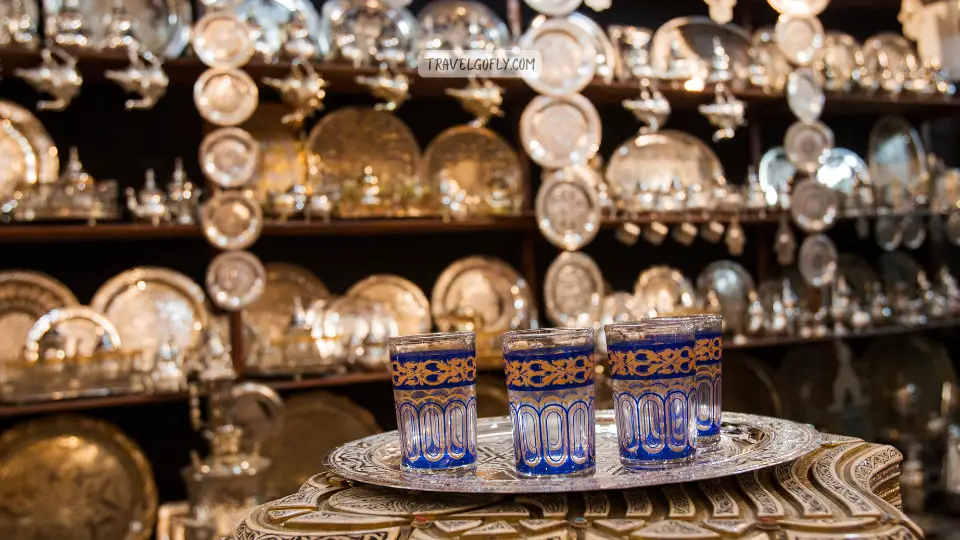 Crafting the ideal Fes itinerary depends on your interests, fitness level, and available time. These suggested plans balance must-see attractions with cultural immersion and practical logistics.
Crafting the ideal Fes itinerary depends on your interests, fitness level, and available time. These suggested plans balance must-see attractions with cultural immersion and practical logistics.
Fes in 1 Day: The Whirlwind Tour
Starting at 9:00 AM at Bab Boujloud, this intensive itinerary covers Fes essential highlights while allowing time for cultural absorption.
Begin with the Blue Gate for orientation and photos, then enter the medina via Talaa Kbira. Your first stop should be Bou Inania Madrasa for architectural appreciation and historical context. The nearby Al-Attarine Madrasa provides contrasting styles and peaceful atmosphere.
Navigate toward the Kairaouine Mosque area, observing the university exterior and exploring Place Seffarine metalworking traditions. Continue to the Chouara Tanneries for the quintessential Fes experience – allow extra time for viewing and potential shopping.
After lunch at a traditional restaurant, visit Nejjarine Museum and explore the surrounding woodworking quarter. Late afternoon should include Dar Batha Museum for comprehensive cultural context and garden relaxation.
End the day experiencing evening energy around R’cif Square, perhaps enjoying mint tea and people-watching as the medina transitions from day to night activities.
This schedule requires steady walking pace and efficient navigation. Consider hiring a guide for morning orientation, then exploring independently in the afternoon.
Fes in 2 Days: Deeper Dive
Two days allow more relaxed exploration with time for cultural activities and spontaneous discoveries.
Day 1 follows the essential medina route but with extended stops for deeper appreciation. Begin with Bab Boujloud and Bou Inania Madrasa, allowing 1.5 hours for detailed exploration. Visit Al-Attarine Madrasa and the Kairaouine area, including extended observation time at Place Seffarine.
Dedicate significant time to the Chouara Tanneries, perhaps including visits to multiple viewpoints and leather workshops. Take a proper lunch break at a traditional restaurant, using the midday rest period as locals do.
Afternoon exploration includes the Nejjarine Museum and surrounding artisan quarters. End with sunset visits to either the Mellah or Fes el-Jdid areas for different architectural perspectives.
Day 2 begins with Dar Batha Museum for historical context, then explores the medina residential quarters like Chaouwara for authentic cultural immersion.
Mid-morning might include a cooking class or artisan workshop visit for hands-on cultural experience. Lunch in the medina allows trying different local specialties.
Afternoon options include climbing to Borj Nord or Borj Sud for panoramic views, exploring the Andalous Quarter, or shopping in specialized souks. Evening possibilities include hammam experiences or traditional music performances.
Fes in 3 Days: Immersive Experience
Three days accommodate comprehensive exploration plus day trip opportunities or intensive cultural activities.
Days 1-2 follow the two-day itinerary with additional time for spontaneous discoveries and relaxed pacing. Extra activities might include:
- Extended artisan workshop visits
- Multiple neighborhood exploration
- Cooking classes or cultural workshops
- Traditional hammam experiences
- Evening cultural programs
Day 3 offers several options depending on interests:
Cultural Immersion Option: Deep dive into specific aspects of Fassi culture. Morning cooking classes including market visits and meal preparation. Afternoon artisan workshops observing zellij, metalwork, or weaving processes. Evening traditional music or cultural performances.
Day Trip to Meknes & Volubilis: Explore Morocco other imperial city and Roman ruins. Early morning departure allows full-day exploration of Meknes imperial monuments and Volubilis archaeological site, returning to Fes by evening.
Middle Atlas Mountains: Visit Ifrane and surrounding cedar forests for mountain scenery and Barbary macaque encounters. This option provides natural contrast to urban cultural immersion.
Escape the City: Best Day Trips from Fes
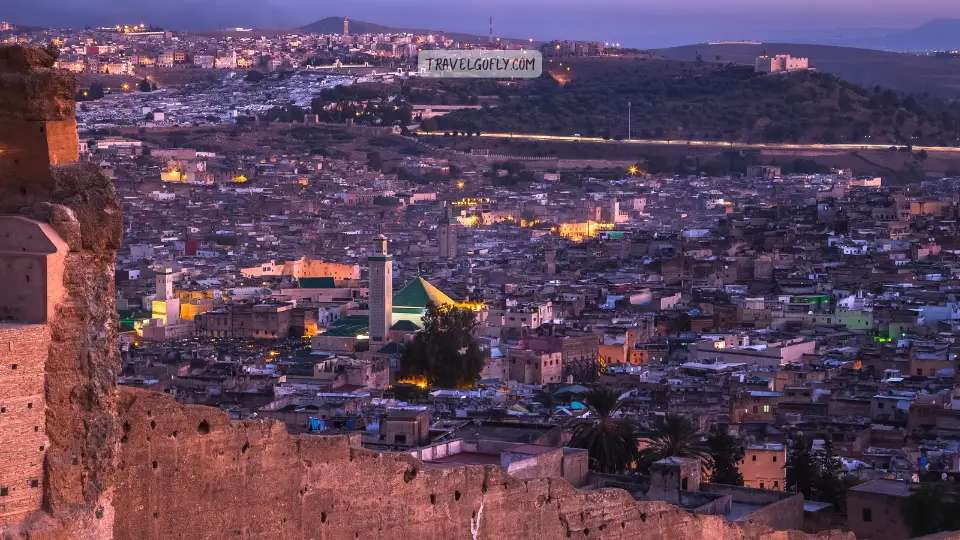 Fes central location provides access to diverse landscapes and historical sites within day-trip distances. These excursions complement urban cultural experiences with natural beauty and different architectural styles.
Fes central location provides access to diverse landscapes and historical sites within day-trip distances. These excursions complement urban cultural experiences with natural beauty and different architectural styles.
Meknes & Volubilis: Imperial Splendor and Roman Ruins
The combination of Meknes and Volubilis creates Morocco most comprehensive historical day trip, spanning from Roman antiquity through Islamic imperial periods.
Meknes, built by Sultan Moulay Ismail in the 17th century, showcases imperial ambitions through massive gates, stables, and palaces. The Bab Mansour gate represents Moroccan architectural pinnacle, while the underground granaries demonstrate engineering mastery. The mausoleum of Moulay Ismail provides insights into royal burial traditions and architectural evolution.
Volubilis, located 30 kilometers from Meknes, preserves extensive Roman ruins including well-preserved mosaics, public buildings, and urban planning examples. The site demonstrates Roman North African culture and provides context for Morocco pre-Islamic history.
Combined visits require full days starting early (8:00 AM departure from Fes) and returning by early evening. Organized tours provide transportation and guides, while independent travel requires rental cars or grand taxis. Admission to both sites costs approximately MAD 70 total.
Chefchaouen: The Blue Pearl
Chefchaouen blue-painted medina creates one of Morocco most photogenic destinations, though the journey requires commitment given the 3-4 hour drive each way from Fes.
The mountain town Andalousian architecture, artisanal traditions, and relaxed atmosphere contrast dramatically with Fes urban intensity. Key attractions include the central plaza, the Kasbah museum, and countless Instagram-worthy blue alleyways.
This trip works better as an overnight excursion, but determined day-trippers can manage it with very early departures (6:00 AM) and late returns (9:00 PM). Organized tours provide logistics management, while rental cars offer flexibility for stops in intermediate towns.
Consider this option carefully – the long travel times leave limited exploration time, potentially creating rushed experiences that don’t justify the effort.
Middle Atlas Mountains: Ifrane & Azrou Cedar Forests
The Middle Atlas provides natural respite from urban immersion while showcasing Morocco ecological diversity and Berber mountain culture.
Ifrane, dubbed “Little Switzerland” for its Alpine-style architecture and cool climate, offers clean mountain air and mountain resort atmosphere. The nearby Azrou cedar forests house Barbary macaque populations in their natural habitat – one of the few places to see North Africa only primate species.
The route includes traditional Berber villages where carpet weaving and mountain agriculture continue ancestral practices. Local guides can arrange visits to cooperative workshops and traditional homes.
Day trips allow 4-5 hours in the mountains with comfortable travel times. The journey showcases geographical diversity from urban plains to mountain forests, providing environmental context for understanding Morocco varied landscapes.
Winter visits may encounter snow, creating dramatic scenery but requiring appropriate clothing and potentially affecting road conditions.
Rest Your Head: Best Areas & Riads/Hotels in Fes
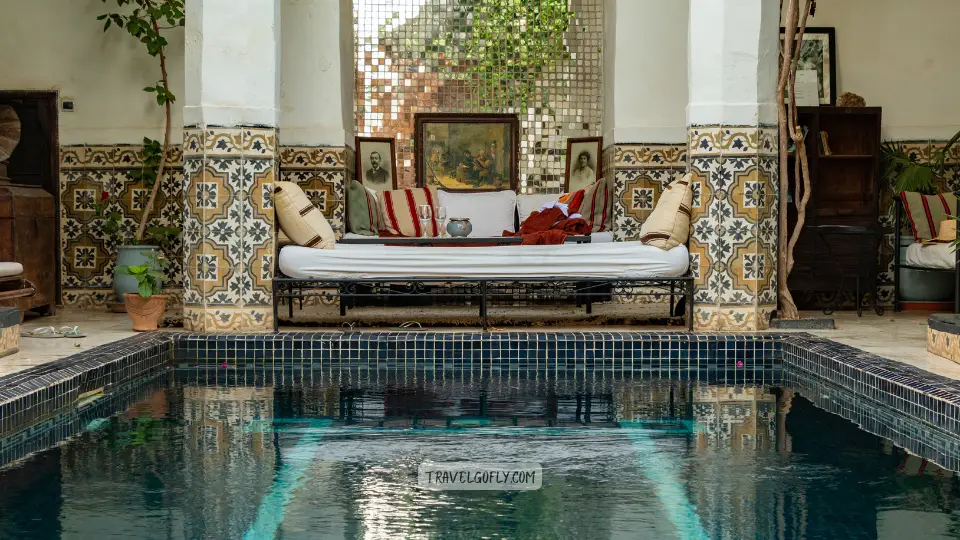 Choosing accommodation in Fes affects not just comfort but accessibility to attractions and cultural immersion depth. Each area offers distinct advantages and considerations.
Choosing accommodation in Fes affects not just comfort but accessibility to attractions and cultural immersion depth. Each area offers distinct advantages and considerations.
Understanding Accommodation: Riads vs. Hotels vs. Dars
Riads represent traditional Moroccan houses built around central courtyards, typically restored as boutique accommodations. They offer authentic architectural experiences with modern amenities but may lack facilities like pools or gyms. Access requires navigating medina alleys, sometimes involving walking with luggage.
Dars are smaller traditional houses without courtyards, often providing intimate, homelike experiences. They typically cost less than riads while maintaining authentic character but offer fewer amenities and space.
Hotels in the Ville Nouvelle provide familiar international standards with reliable amenities, parking, and accessibility. They lack traditional character but offer convenience for travelers preferring modern facilities or those with mobility limitations.
Best Neighborhoods to Stay in Fes
Fes el-Bali (Old Medina): Staying within the medina provides maximum cultural immersion and proximity to major attractions. However, vehicle access is limited, noise levels can be high, and navigation requires adjustment. This option suits travelers prioritizing authentic experiences over convenience.
Benefits include walking to attractions, experiencing medina life after tourist hours, and convenient access to traditional restaurants and shops. Challenges include limited luggage transport options, potential noise from early morning calls to prayer, and navigating with directions.
Fes el-Jdid: This area offers traditional architecture with better vehicle access than the old medina. Accommodations here typically provide authentic experiences while maintaining practical conveniences.
The area provides easy access to both the old medina and Ville Nouvelle, making it ideal for travelers wanting traditional character with practical convenience. However, attraction density is lower than in Fes el-Bali.
Ville Nouvelle: Modern hotels in the French-built new city offer international standards, reliable amenities, and vehicle access. This area suits travelers prioritizing comfort, families with specific needs, or those using Fes as a base for day trips.
Benefits include parking, modern amenities, international restaurants, and easier navigation. Disadvantages include distance from historic attractions and limited traditional atmosphere.
Recommended Stays
Luxury Options (MAD 2000+ per night):
Riad Fes: This restored 17th-century palace offers the ultimate in traditional luxury with spacious suites, refined dining, spa services, and impeccable service. The central medina location provides easy access to attractions while maintaining peaceful atmosphere.
Palais Amani: Located near Bab Ftouh gate, this boutique hotel combines traditional architecture with contemporary luxury. Features include multiple restaurants, spa facilities, and elegant gardens.
Mid-Range Options (MAD 500-1500 per night):
Dar Roumana: This intimate riad near the tanneries offers stylish accommodation with personalized service. The rooftop terrace provides excellent views, while the central location facilitates medina exploration.
Riad Maison Bleue: A beautifully restored riad featuring traditional architecture, atmospheric courtyards, and convenient location near Bab Boujloud. The property includes restaurant service and cultural activities.
Budget Options (Under MAD 500 per night):
Dar Anebar: A charming family-run riad offering authentic experiences at reasonable prices. The friendly hosts provide local insights and assistance with navigation and planning.
Hotel des Merinides: Located in Ville Nouvelle with panoramic views over the medina. Provides reliable accommodations with modern amenities and easy parking access.
Fes Awaits: Start Planning Your Adventure!
Fes reveals its secrets slowly, rewarding those who approach with patience, curiosity, and respect for its ancient rhythms. From the meditative call to prayer echoing off thousand-year-old walls to the satisfying thud of brass being hammered into shape, every moment in this imperial city connects you to centuries of continuous human story.
Whether you find yourself mesmerized by the hypnotic patterns of zellij tilework, overwhelmed by the sensory symphony of the tanneries, or simply enjoying mint tea in a quiet riad courtyard, Fes offers experiences that transform travelers into storytellers. The city doesn’t just show you Morocco past – it invites you to become part of its continuing narrative.
Remember that the best Fes experiences often happen between planned activities: the spontaneous conversation with an artisan, the unexpected discovery of a hidden fountain, or the moment when the medina maze suddenly makes sense. Embrace the beautiful confusion, trust in Moroccan hospitality, and prepare for a journey that will linger in your memory long after the last grains of desert sand have been shaken from your shoes.
What are you most excited to do in Fes? Will you brave the aromatic intensity of the tanneries, lose yourself in the geometric perfection of a madrasa, or perhaps master the art of tagine preparation? Did we miss any hidden gems that deserve mention? Share your Fes dreams and discoveries in the comments below – your insights might inspire the next traveler perfect adventure.
